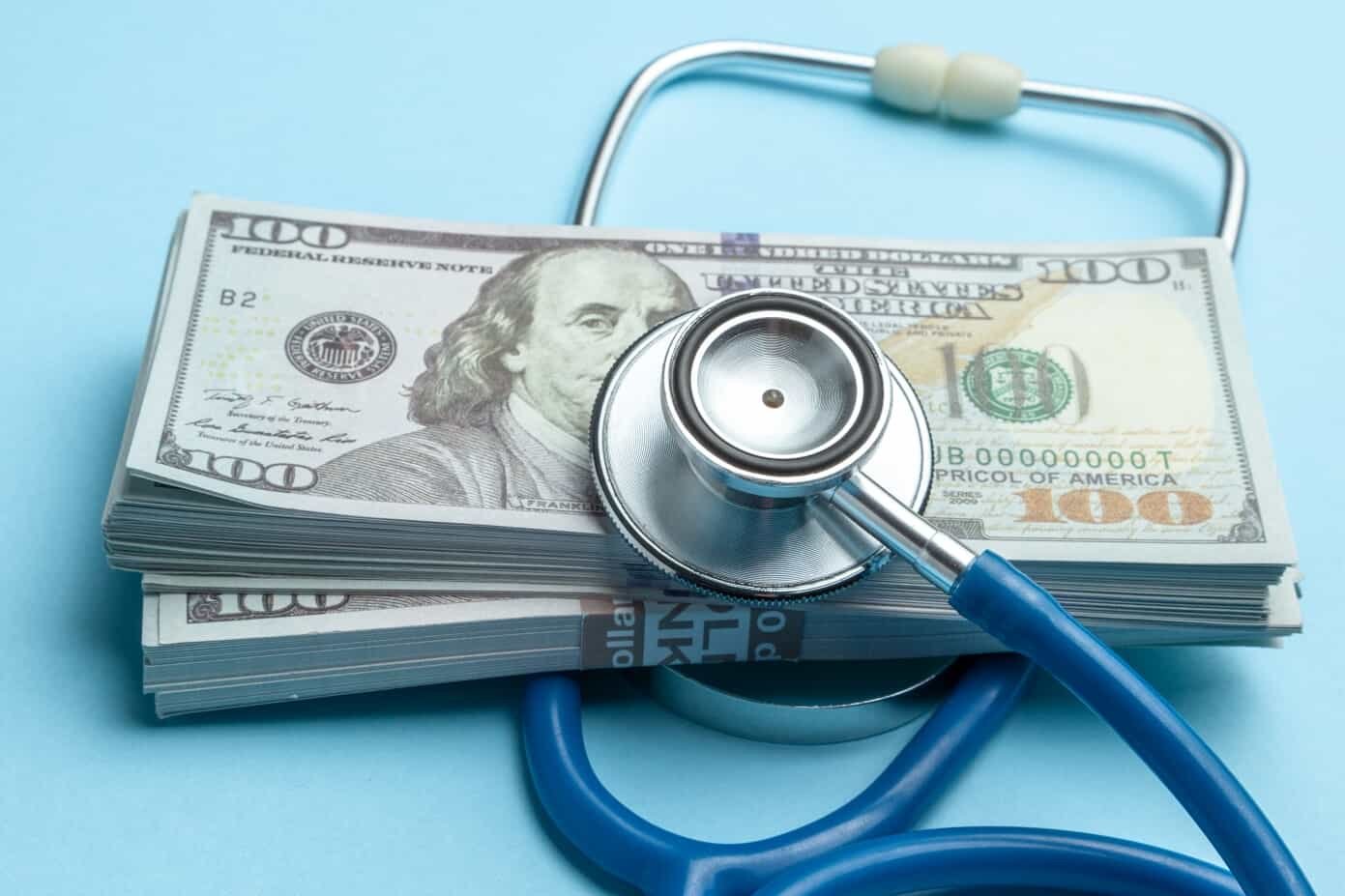Improve Hospital Efficiency: How to Increase Profitability
September 18, 2025 2025-09-21 4:25Improve Hospital Efficiency: How to Increase Profitability

Improve Hospital Efficiency: How to Increase Profitability
Hospitals form the backbone of every community. They are one of the major facilities that we cannot live without. They offer us great services, but they face many challenges.
These challenges can affect their profits from healthcare services. For instance, the cost of hospital equipment supplies can be high, leading to low profits.
Our discussion today aims to help healthcare providers find ways to Improve Hospital Efficiency and stay afloat in the business. We will examine the steps they can take to improve profitability even in challenging economic conditions. The most crucial step that every healthcare organization should adopt is strategic planning. That is why we will discuss it in detail to elaborate on how to approach it, as well as why it is crucial.
The basis of finding a solution to every problem lies in identifying the underlying causes. With that in mind, we must not overlook some of the key factors that impact the profitability of hospitals.
A hospital should strive to reduce certain costs to boost its profitability. Before examining the hospital equipment for sale, it is essential to create a budget for the necessary items. This aspect will also form part of our discussion.
Finally, we will share tips on how to improve hospital Efficiency. This will help make it more profitable and solve many challenges.
In the end, you will learn how to increase revenue in a healthcare organization. You will also stay competitive in the medical field. Learn more!
What Is Strategic Planning In Healthcare Organizations?
How you handle strategic planning determines the success of your business. This is also a helpful tool that every healthcare organization should use. Strategic planning depends on the size of your organization as well as the exact services you offer to patients.
Before implementing a strategic plan, it is essential to understand its conceptual aspects. Many people see strategic planning as creating a document. This document outlines the organization’s strategy for moving forward from its current situation.

It involves making sound decisions that guide the structure and activities of the organization. Even if the organization has all the hospital supplies, it might still face challenges in healthcare.
The importance of strategic planning lies in understanding the hospital’s current situation. It helps create a vision for the future. Strategic planning outlines the actions required to transform the hospital facility and achieve the set objectives.
Hospitals should establish a clear process and capitalize on external opportunities to enhance their operations. This will help them build skills that support their goals. Strategic planning enables an organization to identify hidden opportunities and threats. This way, they can address challenges before they happen.
Implementing strategic planning in a hospital streamlines the decision-making process. You can assess the key hospital supplies your team needs to buy. This will help improve efficiency in your facility.
It also encourages the rest of the team members to participate in achieving planned results. It brings the organization together and helps you build the hospital’s image, increasing efficiency and profitability.
Factors Affecting the Hospital’s Profitability
A hospital should offer good-quality services. It also needs to make a profit because it is a business like any other. The hospital needs to determine how much money it can generate at the end of the day. This follows the payment of all the bills, including monthly loan payments and employee salaries.
The profitability of the hospital can determine how long it will last in the industry. Some factors may interfere with this and impact the business’s productivity. Hospitals should consider restructuring their systems to boost economic performance. The following are some key factors that influence a hospital’s profitability.

Overcapacity in certain regions
Every hospital has to struggle to get paying patients. They expand their reach in one area to attract patients who can pay for their services. When every healthcare facility employs this same strategy, it leads to overcapacity and overbuilding in a particular region.
This is what makes one area have more than three hospitals competing for the same clients. While the area may not be able to withstand a lot of new construction, the new hospitals may struggle to make profits.
Expensive IT introductions
Some hospital equipment, especially items that enhance technology in healthcare, can be exorbitantly expensive. IT introductions are significant investments that are necessary for hospitals.
The lack of funds to buy them hurts the hospital’s profits. You cannot perform some procedures without these items. This can lead customers to opt for large government hospitals, which are often better equipped than small private ones.
The lack of patient satisfaction
The customer experience has a significant impact on the profitability of a hospital. Institutions with poor customer support tend to lag, as patients may seek out other friendly healthcare providers. A report shows that hospitals in America with better customer experience have a higher net margin. This is compared to hospitals with an average customer experience.
Customer satisfaction helps patients view the healthcare facility in a positive light. When patients are not satisfied, they often complain. These complaints can hurt profitability. To reduce such conflicts, it is essential to employ professional staff who know how to treat patients with hospitality.
High rates of readmission
Maintaining high readmission rates is costly for hospitals and can reduce their profitability. These rates can lead to Medicare and Medicaid penalizing the hospital. They may think the hospital is not providing the best care.
The hospital may have to pay high Medicare rates from the profits that it makes. This is an unnecessary expense that they should avoid and instead use the money to add hospital equipment supplies.
A hospital that repeatedly readmits patients within a short period can negatively impact its reputation, ultimately leading to reduced profits. The hospital can reduce the rate of readmission by providing follow-up care for the patients.
Unnecessary testing
Sometimes, hospitals conduct unnecessary tests on patients. They end up misusing supplies, which leads to the wastage of resources and, consequently, a reduction in profits. Statistics reveal that repetitive testing in the US results in wasted resources amounting to $5 billion every year.
Unnecessary procedures are a significant issue affecting the healthcare system. These tests hurt the hospital’s profits. They must keep buying more equipment to avoid running out of resources.
High rates of unemployment
High rates of unemployment, unfortunately, affect not only individuals but also the profitability of hospitals. Joblessness leads to unhealthy conditions such as stress, diabetes, or even pressure. These patients require medical care, although they may not be able to afford the services. For a hospital, this translates to huge debts when many patients cannot afford coverage.
Such an institution may not generate sufficient profits to purchase additional hospital equipment and supplies, and therefore may struggle to continue expanding its operations. Charity care can help struggling patients, even if providers may not profit from it. Unemployment is a long-term challenge that poses a significant risk to hospitals. It reduces the number of patients who can pay for medical services.
Budgeting and Financing Medical Equipment
For a hospital to be profitable, it must work with a budget to avoid wasting resources. The healthcare facility must distinguish between the needs and wants of the organization while planning. You must decide which hospital equipment supplies are most relevant to your needs.
Budgeting is a crucial element, especially when purchasing multiple pieces of equipment. Use the following tips to finance medical equipment and budget for it adequately.

Form a list of the equipment you need
The first step in budgeting is to compile a list that includes all necessary items. Numerous hospital equipment for sale exist in the market, but you may not need all of them. Consider what your hospital specializes in and choose the most relevant items you cannot work without.
You must also consider the patient load within your hospital to determine how much of each piece of equipment you need to purchase. For example, if you have a maternity ward, you might need one or two ultrasound machines. This will help serve a small number of pregnant women in the hospital.
Some of the supplies are mandatory for every hospital. For instance, you will need safety supplies, such as gloves and face masks, to prevent the spread of germs. Create a comprehensive list as you attempt to identify and categorize the needs and wants.
Focus on major assets.
Once the list is complete, you should focus on the major assets. Outline the features you are looking for in substantial supplies, as well as the technical specifications.
This helps you determine your budget, as you can purchase items that are specifically tailored to your needs. Supplies such as radiology equipment come in different models and features. Consider all the necessary factors when making a purchase.
Move with the trend
When financing medical equipment, it is essential to choose the latest trends to stay current with industry changes. Avoid selecting an outdated machine that may not perform as well as modern equipment.
Conduct research on the latest market developments and determine if these materials will meet the needs of your patients. Utilize advanced technology to deliver exceptional customer service. This, in turn, will raise hospital profits.
Set a timeline
At the beginning of every project, you should establish a timeline for the disbursement of funds. As you prepare your budget, ensure that you distribute the funds on time to avoid a resource shortage. Apply for a loan to finance hospital equipment supplies well in advance. You might need to set up a modular operating room a few months before buying other medical supplies.
Evaluate different modes of medical equipment.
Medical supplies account for a significant portion of the overall cost of fixed assets. Therefore, a need exists to explore various channels that can help finance them. You can opt for a structured loan from a financial institution or lease them from a company.
Leasing has an advantage. You don’t need to do much research. The leasing company provides the necessary equipment. Some charitable organizations also offer donations in the form of medical equipment and supplies to medical facilities.
Transforming Hospital Facility
Introducing new ideas to a hospital can help it provide better services. This can also improve workflow and boost profits and efficiency. Transforming a hospital facility can also increase patient experience and achieve patient satisfaction. It reduces complaints within the organization and gives patients a sense of reliability.
You should adopt techniques that minimize the treatment costs while finding solutions to most of the challenges. Deploying resources without a plan is what makes healthcare centers costly to run and prevents them from achieving their goals. The following tips can help a hospital make the necessary changes.

Using affordable IT solutions
Hospitals should start implementing affordable software tools that can enhance quality performance and streamline operations. IT solutions enable doctors to diagnose patients accurately and administer effective treatment.
By digitizing a hospital, you help technicians collect useful data. They can use this data for future reference. This means that a doctor can quickly access a patient’s records without relying on outdated files, which can be a time-consuming process.
They can share a patient’s history. This helps them better understand the patient’s condition. It also avoids unnecessary tests that waste resources.
It also reduces patient worry, as it eliminates cases such as lost reports or prescriptions. Doctors can share digital data with other physicians via email for further analysis and compile comprehensive reports. They can easily identify disease patterns and become more productive in their work.
You can track assets and find hospital equipment supplies you need to reorder. This helps when people misplace items. Use data analytics to track biometric data. This enables you to gain more insights about the population.
Choose smart infrastructure models.
These designs interconnect various medical departments to enhance flexibility within a hospital facility—medical planners who establish smart. Infrastructure designs can improve efficiency within a medical institution.
Smart spaces also boost your teams’ productivity. Utilizing tag devices, such as ID badges and wireless infrastructure, can enhance hospital efficiency and productivity. You can use push notifications, which involve sending messages to different patients to inform them of their upcoming appointments.
Improve the communication system.
Proper communication can save a hospital a lot of costs. The doctors and staff members should maintain excellent communication to enhance the quality of healthcare services to customers. You can break some of the communication barriers by training the staff to make them professionals.
The hospital should provide good customer support. This can include email, phone lines, and live chat. These features will help improve communication with patients. This can reduce the number of visits patients have to make to the hospital for inquiries.
You should follow up on your patients’ condition. Communicate with them to provide guidance and ensure positive progress.
Maintain a good relationship with patients.
Caring for patients is one way to increase profitability, as patients tend to visit hospitals where they feel appreciated. Therefore, you should strive to maintain a healthy relationship with patients. For instance, you can provide online portals that allow them to book appointments without needing to visit the clinic beforehand.
Ask for feedback from them so that they can feel that you have their interest at heart. Getting feedback gives you an idea of their needs so that you can work hard to fulfill them. Set up some important things near your reception. A cafeteria can help make patients more comfortable while they wait for treatment.
Conclusion
The medical industry is constantly evolving, and every hospital should adapt to these changes to remain competitive and profitable. Several factors influence the revenue generated by a medical facility. Stakeholders should use SMART goals and methods to boost productivity. Begin by establishing a strategic plan to define the organization’s goals.
To reduce costs and start generating profits, a hospital must carefully select its medical equipment and supplies. This involves budgeting and exploring various financing options. You can transform the hospital facility by utilizing smart technology, enhancing patient relations, and improving the communication system.
FAQs on Improving Hospital Efficiency & Profitability
What are the most effective ways hospitals can improve operational efficiency?
Improve patient flow by managing admissions, transfers, and discharges. Cut down wait times and optimize staff schedules. Utilize electronic health records (EHRs) and standardize clinical protocols to ensure more consistent care.
How does reducing waste contribute to hospital profitability?
Reducing waste—like unused supplies, over-ordering, and unnecessary processes—lowers costs. It also improves supply chain management. This approach cuts inventory holding costs and reduces losses from expired or outdated items.
What role does technology play in increasing hospital efficiency?
Technology such as EHR systems, telemedicine, and automated billing can improve efficiency. These tools help reduce errors and save staff time. AI can help with resource allocation, and digital dashboards can track performance metrics.
How can hospitals optimize staff utilization without compromising care quality?
Use predictive staffing models. Cross-train employees for different roles. Schedule staff to match supply with demand.
Focus on peak times and quieter periods. Provide ongoing training to enhance the skills of current staff, rather than continually hiring new personnel.
What financial management practices help improve hospital profitability?
Best practices include doing regular cost-benefit analyses and budgeting with lean management principles. Track key financial indicators, like cost per patient and average length of stay. Negotiate supplier contracts and ensure accurate billing and claims processing.
How can hospitals improve scheduling and reduce bottlenecks?
Use automated scheduling tools. Analyze data to predict busy service times. Standardize appointment times. Reduce changes in procedure scheduling. Work together across departments. Radiology, OR) to avoid delays.
What strategies can hospitals use to improve patient satisfaction while also improving profitability?
Improve communication. Reduce wait times. Ensure cleanliness and comfort. Create smoother admission and discharge processes.
Ask for patient feedback and act on it. Happier patients tend to lead to more referrals and better outcomes, which indirectly boost profits.
How important is supply chain optimization in cutting hospital costs?
Supply chain efficiency is crucial. Hospitals can save money by consolidating vendors and buying in bulk. They should also monitor usage patterns. Reducing overstock and stockouts helps maintain quality while cutting costs.
What measures can hospitals take to reduce length of stay without jeopardizing patient care?
Create a clear discharge plan. Work with a team of doctors, nurses, and social workers.
Use protocols for early movement. Assess risks for complications. Schedule follow-ups after discharge to prevent readmissions.
How can hospitals leverage data and analytics to make efficiency improvements?
Collect and track metrics such as bed occupancy, average length of stay, readmission rates, procedure times, and staffing utilization. Use dashboards to visualize trends, identify bottlenecks, and guide decision‑making.
Are there staffing models that improve productivity and profitability?
Yes. Here are some examples: float pools to cover busy times, flexible scheduling, and performance-based incentives. Other examples include cross-departmental assignments and utilizing part-time or per-diem staff to handle fluctuating demand.
How do regulatory compliance and safety intersect with efficiency and profitability?
Maintaining compliance and safety tends to improve outcomes and reduce the risk of costly litigation, fines, or reputational damage. Ensuring standards are met lowers avoidable complications or readmissions, which in turn helps financial performance.




